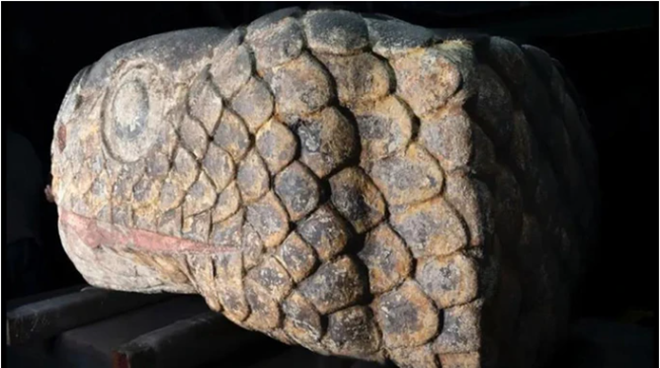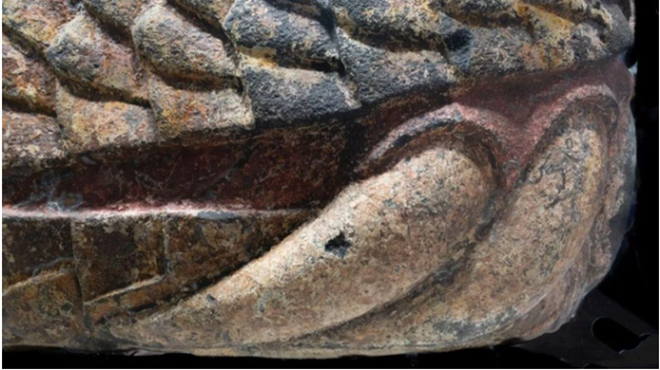According to Live Science, after the 7.6 magnitude earthquake in Mexico City, a giant treasure chest appeared on the campus of the National Autonomous University of Mexico.
Upon receiving the news, archaeologists from Mexico's National Institute of Anthropology and History (INAH) quickly arrived at the scene.

Archaeologists found a snake-headed statue in a university after the earthquake in Mexico. (Photo: Live Science)
Archaeologists have found a snake head statue measuring 1.8m long, 0.85m wide and 1m high. The statue weighs 1.3 tons and is painted in many colors.
According to INAH archaeologists, the statue is about 500 years old and belongs to the Aztec culture. The school where the earthquake occurred has revealed many other ruins of the Aztec civilization.
The Aztecs were always famous for their unique architecture and sculptures. They built many temples, pyramids... to honor the gods, including Quetzalcoatl - a god often depicted as a snake.
However, archaeologists have not yet been able to confirm whether this giant snake head depicts the god Quetzalcoatl or not.

The statue is about 500 years old, belonging to the Aztec culture. (Photo: Live Science)
The statue's red, blue, black and white paintwork remains intact after 500 years of being buried. It is estimated that 80% of the surface still retains its color.
To preserve it, the archaeological team had to use a crane to lift the stone block straight off the ground and build a humid chamber around the sculpture, gradually reducing the humidity to preserve the color of the artifact intact.
“The first time I saw this snake head, I was overwhelmed by its size,” said Bertrand Lobjois, associate professor of humanities at the University of Monterrey in Mexico.
The preservation of the snake’s head’s color is crucial to the discovery, says INAH archaeologist Erika Robles Cortés, who may shed light on how ancient people kept the color stable enough to use in large-scale works, knowing they would need to withstand a variety of weather conditions.
Quoc Thai (Source: Live Science)
Source




![[Photo] Binh Trieu 1 Bridge has been completed, raised by 1.1m, and will open to traffic at the end of November.](https://vphoto.vietnam.vn/thumb/1200x675/vietnam/resource/IMAGE/2025/10/2/a6549e2a3b5848a1ba76a1ded6141fae)



































































































Comment (0)